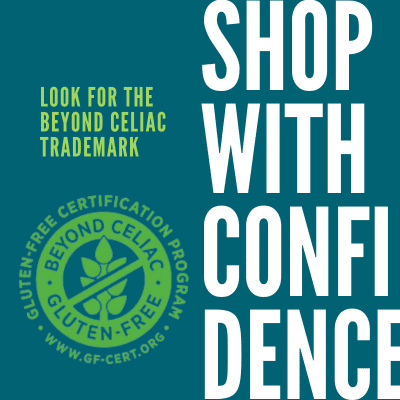Gluten-Free Baking Tips & Tricks
Gluten-free baking is a chemical experimentation and therefore, it’s recommended that recipes are followed as closely as possible. Below you will find some extra tips and tricks for gluten-free baking. These give advice on additional ways to improve recipes, and suggestions for substitutions for bakers who have an additional allergy, intolerance or autoimmune condition.
Gluten-Free Baking Infographic
Get baking tips from the experts!
![]()
Download: Gluten-Free Baking Infographic
Baking Times
Baking times can vary depending on the type of pan you use. Make sure to check the manufacturer’s advice of the pan you’re using and use the pan that for which your particular recipe is calling. Oven temperatures can also vary from kitchen to kitchen, so it is important to tune or test. Essential to this is purchasing an oven thermometer and adjusting the temperature accordingly. Lastly, placing your baked goods in the center of a pre-heated oven will help with even baking. Remember, baking times for gluten-free foods vary greatly, and it’s important to keep a constant eye on your creation to monitor for the colors and textures that indicate doneness. These recipes often call for longer baking times at a lower temperature compared to traditional recipes.
Flavor
New bakers should try adding extra vanilla and/or spices to recipes. Gluten-free flours often have unique tastes, and adding additional flavoring to recipes will help cover up these unfamiliar flavors.
Freshness
Gluten-free grains and starches have a shelf-life, so it’s recommended to buy them in smaller quantities and store in the refrigerator or freezer to prolong the essential properties of your ingredients. Some flours can even be made at home buy purchasing the whole grain and then processing with a coffee grinder.
To avoid baked goods becoming soggy, transfer to a wire rack as soon as possible after baking to ensure that they cool properly. Left-overs can then be frozen to preserve freshness, just make sure to thaw them completely before eating.
Leavening & High Altitude
2 teaspoons of baking powder per cup of gluten-free flour is necessary to ensure proper leavening. Baking soda and buttermilk can be used to leaven instead of baking powder, but 1-1/8 teaspoon of cream of tartar should be added for each 1/2 teaspoon baking soda used. Dissolving leaveners in liquid prior to adding to dough will give a better rise to the product.
Gluten-free baking at high altitude requires less liquid and either a higher oven temperature or a longer baking time. Start with omitting 2 tablespoons of liquid and increasing the oven temperature by 25° F.
Moisture
There are many ways to increase moisture in a recipe. In general, recipes that call for pureed fruit, sour cream or yogurt are ones you can rely on for a moist product. In case your recipe does not call for these things, using brown sugar instead of white sugar to add moisture. Honey and agave as a sugar substitute can enhance moisture as well, but be aware that you should cut down slightly on the other liquids you are using in the recipe, as honey and agave are not solid ingredients. Adding an extra egg or oil can also help, but use caution.
Nutrition
Substituting 1/4 cup ground flaxseed in 1/4 cup water for 1/4 cup flour will increase nutrition in any recipe.
Structure
As you probably know, gluten is the ingredient most responsible for the structure of baked goods in traditional recipes. Using dry milk solids or cottage cheese in a recipe can help mimic glutenous structure. Sometimes using the moisture tricks listed above will also solve structure problems with products that come out too dense and crumbly. It’s important to avoid over-kneading or -beating gluten-free dough, as there is no gluten to develop with kneading.
Substitutions
Butter
Try to use butter substitutes that come as a stick, rather than in a tub as these will contain a similar amount of moisture than regular butter. Shortening, coconut oil, olive oil and silken tofu are all suitable substitutes. Using combinations of these ingredients will work best.
Eggs
Store bought egg replacer is a good option for substitution. Alternative ingredients include milled flax seeds, silken tofu, mashed bananas or figs. Milk can also work if boosting with additional baking powder. If using flax seed, it must be milled and combined with hot water before using.
Milk
Coconut, soy, rice and nut milks can be substituted for regular milk.
Sugar
3/4 cup honey can be substituted for 1 cup of granulated or brown sugar, if liquid in the recipe is reduced by 1/4 cup. Maple syrup, brown rice syrup and agave can also be used instead of honey.



